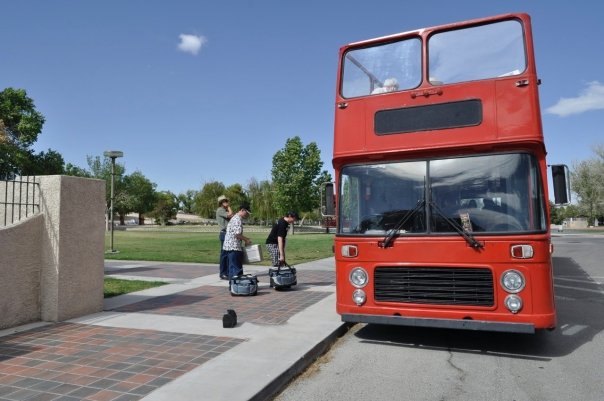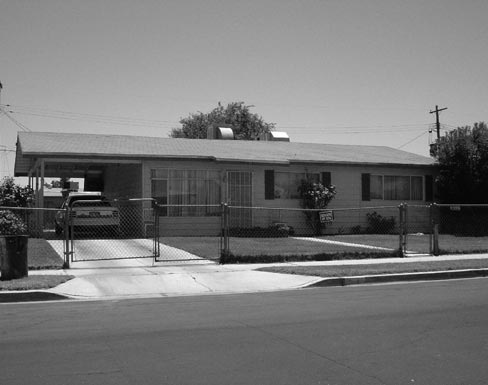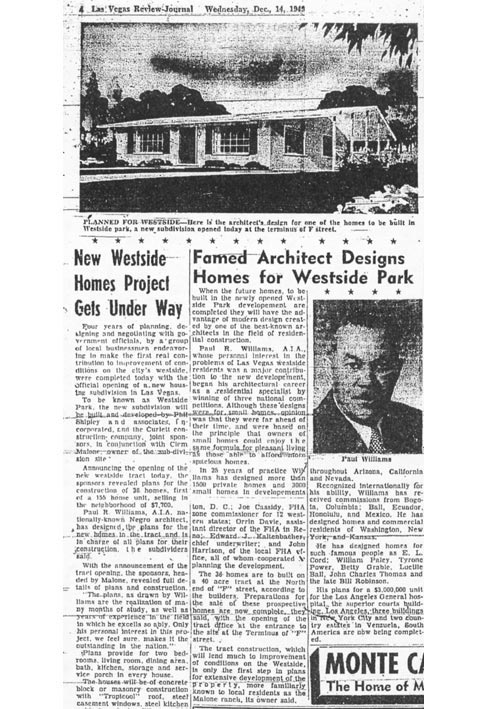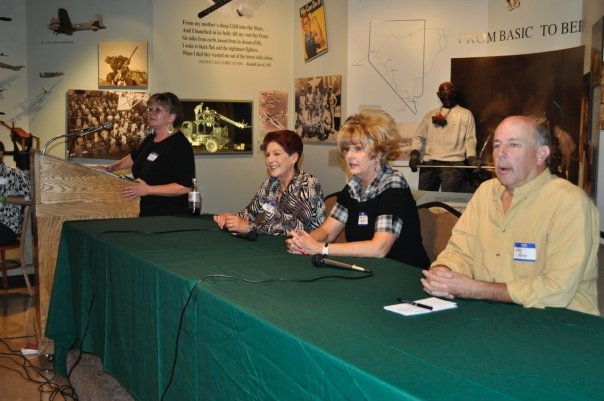
Moderator Lynn Zook (far left), Karen Zick Goff, Claire Zick Walker and Alan Hess
We had a terrific time on Saturday, October 3rd shining the spotlight on Walter Zick and his partner Harris Sharp at our all day event.
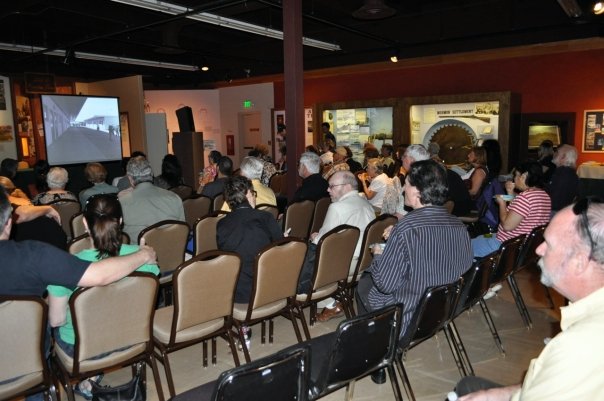
The Docents and Volunteers for the Nevada State Museum, Las Vegas prepared a wonderful spread of light finger food, punch and champagne. The anticipated overflow crowd made us move into the History Gallery for the panel. Wise move, because we had almost 100 people in attendance.
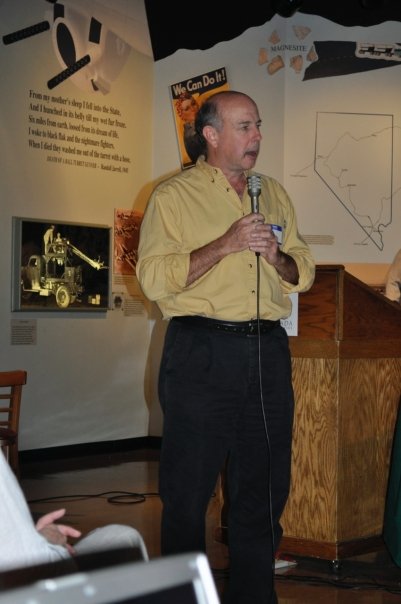
Alan Hess talked about what Mid-Century Modern architecture, what it is and why it is important. He also talked about "cultural amnesia". Our past reminds us of who we are, what ideals mattered to us and also shows us how far (or not) we have come. Mid-Century Modern Architecture, perhaps more than others forms of architecture, caught the zeitgeist of post-war America. We were a brash, optimistic country, filled with big dreams and big plans. MCM architecture was filled with much of that same brashness and optimism. Throw in the space race and there seemed no limit to what we could achieve.
"Cultural amnesia" is what we commit, according to Alan, when we tear down our buildings, signage and neighborhoods only because they are old. We lose those links to our past and we don't easily, if at all, get them back.
Alan then spoke at length about the Mint Hotel and why the design of that building and signage still tugs at our memories after all these years.
Walter Zick's daughters, Karen and Claire talked about how their dad had come to Las Vegas in the mid-1940s to work on the Flamingo Hotel.
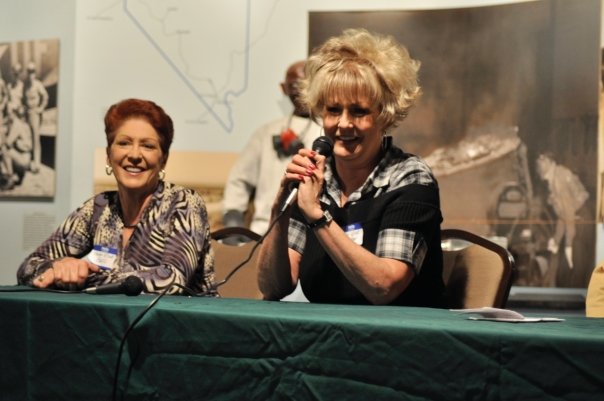
They talked about growing up in the Twin Lakes (today, Lorenzi Park) neighborhood where the NSM is located today. The first home that their father designed and built for his family is less than a mile west of the Museum on Skolgund Circle. The house included a 50 foot pool that became a homing beacon for pilots flying into Nellis Air Force Base.
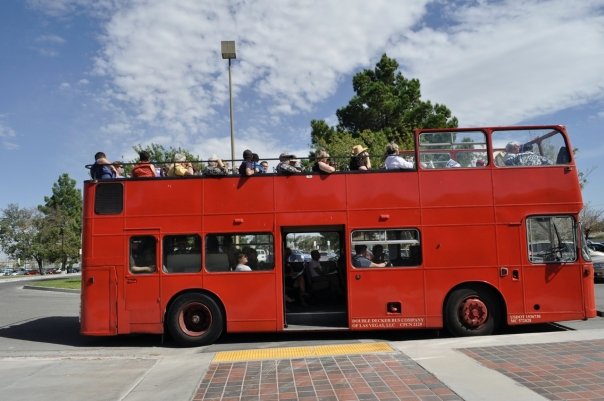
Then it was time to get on the bus! and begin our tour of Walter Zick's Mid-Century Modern Las Vegas!
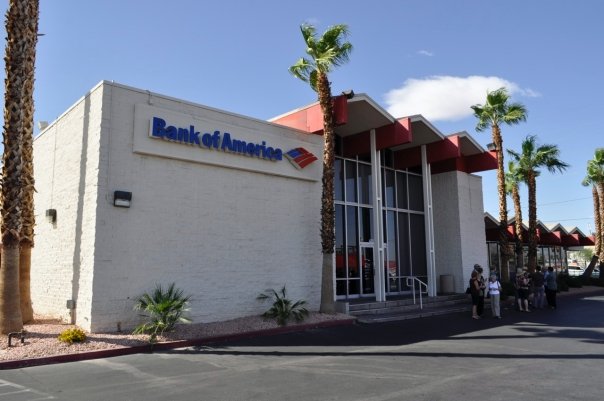
Our first stop was at the Bank of America on West Charleston. It was originally a Bank of Las Vegas, then became a Valley Bank (where my family banked) and is today still in remarkable shape. A drop ceiling, an upstairs addition and the loss of some original windows are the only changes apparent to the interior.
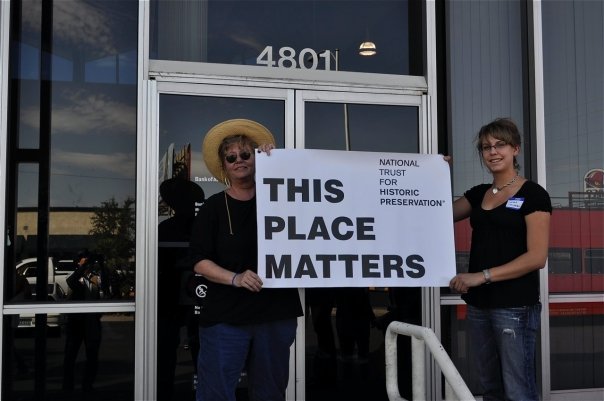
Sara Snodgrass, president of the AIA-S and keeper of our route and schedule and I proclaim proudly for the National Trust for Historic Preservation that "This Place Matters"
Back on the bus and across town we rode to UNLV, passing a number of Zick and Sharp commercial buildings as well as Irwin Molasky's former headquarters and James Brook McDaniel's famous flash cubes!
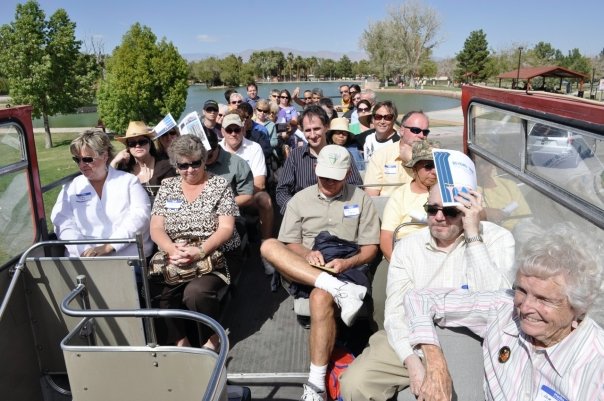
We rolled onto Maude Frazier Way to see the wonderful Zick and Sharp designed Flora Dungan Humanities Building. It is our understanding that this early 1960s centerpiece of the campus for years is endangered.
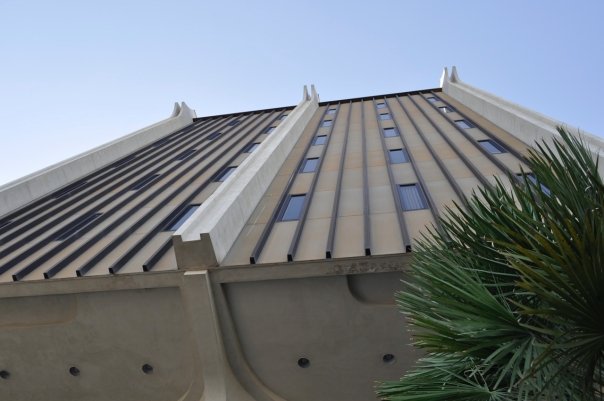
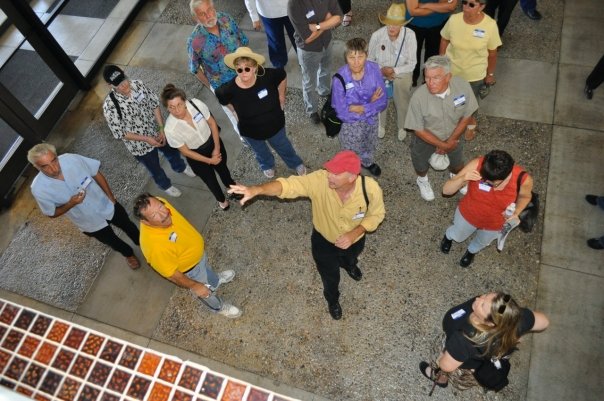
Alan Hess points out important features inside Humanities.
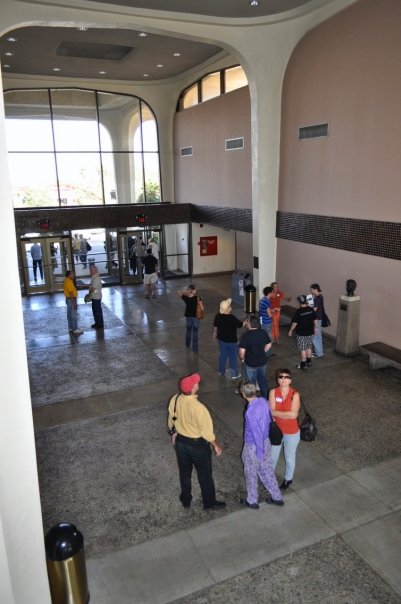
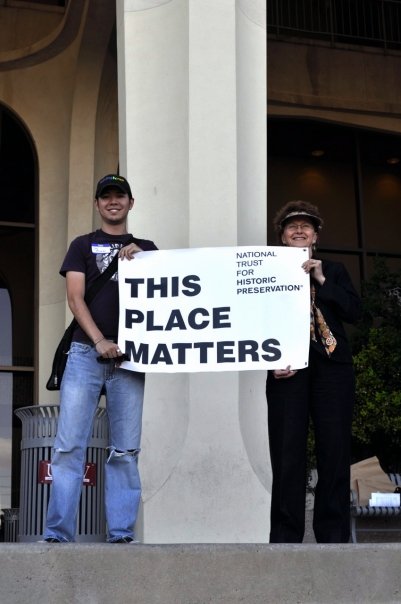
FCLV members Joel Rosales and Judy Bundorf declare "This Place Matters" for the National Trust of Historic Preservation.
Back on the bus, to the east side of town to see the first pod school that Zick and Sharp designed, Valley High School. Then it was on to a neighborhood filled with Mid-Century Modern gems as well as the weeping mortar/squish brick home that Zick and Sharp built for Mayme Stocker back in the mid-1940s.

Karen and Claire Zick declare "This Place Matters" for the National Trust for Historic Preservation.
While MaryJOY! Alderman conducted tours of her unique house, Jack LeVine, Friends of Classic Las Vegas supporter and the man behind VeryVintageVegas.com, led those who had taken the house tour down nearby Maria Elena Drive and showed them some stunning homes:
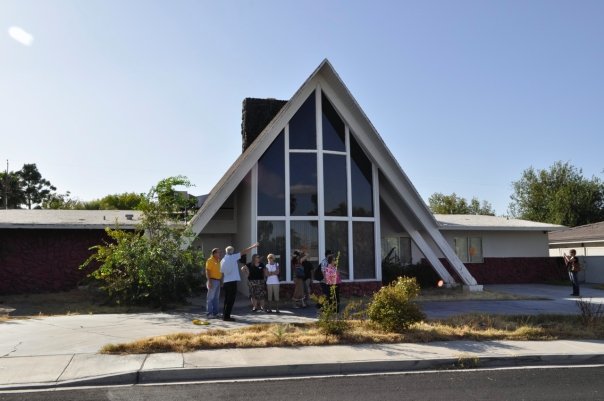
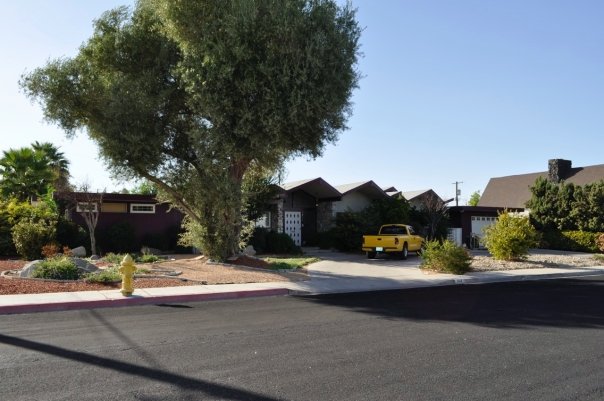
Then it was back on the bus and headed downtown to see the Foley Federal Building, the old Clark County Courthouse and the former Nevada Savings and Loan headquarters before our final stop at the Morelli House. Though Zick and Sharp didn't design the Morelli House, the Junior League of Las Vegas was kind enough to open the house, provide tours and perhaps, most importantly, refreshments!
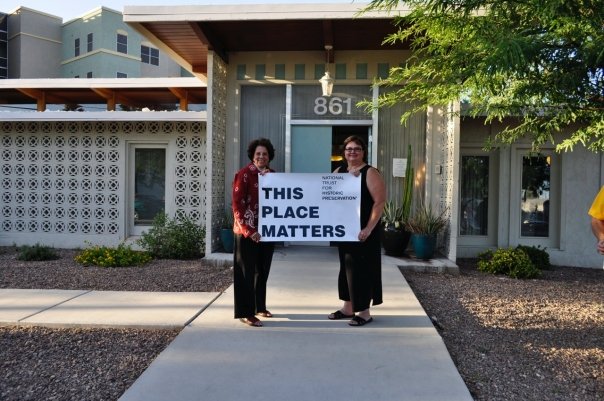
Dedee Nave and Junior League president, Judy Beale proclaim "This Place Matters" for the National Trust for Historic Preservation.
As it was getting towards twilight, we headed back to the Museum.
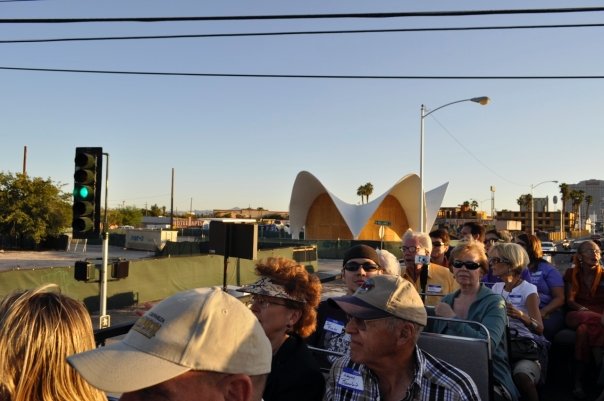
We passed by the Neon Museum and saw the three restored signs in the Cultural Corridor!
We arrived safely back and everyone declared it was a great day. We hope to be able to do another event centered around Mid-Century Modern architecture next year.
Alan Hess and I had so many people come up to us and thank us for showing them a side of Las Vegas that they were unaware of, for showing them what Mid-Century Modern architecture is and why it is important.
Karen and Claire were thrilled to have the spotlight shown on their father for a day and were so happy to see the response to their dad's still standing legacy.
Remember, all these places and more MATTER! You can help us to preserve these buildings by becoming a member of the Friends of Classic Las Vegas and a reader of VeryVintageVegas.com
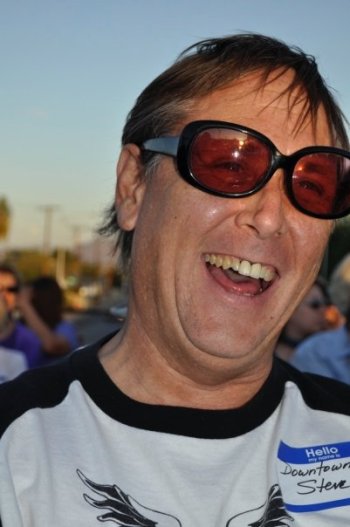
Downtown Steve captures the spirit of the day!
Thank you one last time to everyone who came out for this event, from the reception/panel to those who got on the bus to
Barbara Slivac; the Docents and Volunteers of the NSM, the staff of the NSM, especially Dennis McBride and Tom Dyer;
Karen and Claire Zick; Alan Hess;
the Friends of Classic Las Vegas; VeryVintageVegas.com; Atomic Age Alliance; the Junior League of Las Vegas;
Brian "Paco" Alvarez; Pam Hartley; Zane and Jenny Donaldson, MaryJOY! Alderman and Susan Dean. A special shout-out to the staff of Dona Maria's Downtown for taking such good care of us at the after-event dinner that night.
And lastly, a special thanks to Michael Rosetti and the Double Decker Bus Company!
Let's do it again next year!
